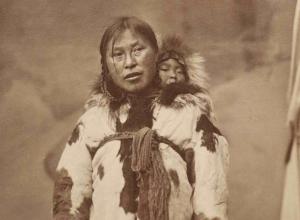The Folio Society Publishes “Studies from Nature"
London — During Japan’s Edo period, an era in which art and literature flourished, Kitagawa Utamaro (c.1754–1806) rose to fame as one of Japan’s most highly regarded artists and printmakers. Alongside his contemporaries Hiroshige and Hokusai, Utamaro was an acknowledged master of ukiyo-e (pictures of the Floating World).
Although he is now renowned for bijin o ̄kubi-e, pictures of beautiful women, it is Utamaro’s Studies from Nature, rarely seen and never before reproduced in facsimile, that reveal his unique artistic genius. These five superbly illustrated books of insects, shells and birds, designed between 1788 and 1790 and amongst Utamaro’s earliest known works, display his talent for pairing strong composition with a delicacy of design, his keen power of observation and eye for detail, and his skill in rendering the beauty of nature with subtlety and graceful simplicity.
More than just precursors to Utamaro’s later art, these extraordinary volumes established his name, assured his future artistic career and prefigured subsequent developments in Japanese art.
These beautiful books are designed to be read in the traditional Japanese style from back cover to front, and from right to left across the page. In each, Utamaro’s elegant illustrations, as interesting to the naturalist as they are to lovers of art and poetry, are paired with kyo ̄ka: playful, erudite and often erotic poems on the sentiments of love, composed by some of the form’s most prominent poets.
Bringing together the skill of the artist and the era’s best writers, printers and bookbinders, the five exquisite volumes that comprise Studies from Nature – the two-volume The Book of Crawling Creatures, the single-volume Gifts of the Ebb Tide and the two-volume The Book of Myriad Birds – are considered the ne plus ultra of the colour woodblock printer’s art and the art of bookmaking of the period and, in fact, surpass most craft bookmaking today.
The Folio Society has printed from amongst the finest surviving first editions – luxury items in their own time and now treasures of the British Museum and the Fitzwilliam Museum – reproducing each element with absolute fidelity to create this magnificent facsimile. This remarkable publication is accompanied by an in-depth commentary which includes a full translation and essays on the poetry, the artist and the culture of the Floating World.
John T. Carpenter, who formerly taught Japanese art history at SOAS, University of London and is now curator at The Metropolitan Museum of Art in New York, has written fascinating translations of all the poems, revised for this edition. His accompanying notes reveal verses that are rich in wordplay and allusion to traditional waka (court poetry) and other East Asian classical literature as well as giving information about the flora and fauna depicted.
Following the translations is a newly commissioned essay ‘The Literary Dimension of Utamaro’s Illustrated Poetry Books on Natural Themes’, which provides the perfect introduction to the period’s kyo ̄ka movement. In it, Carpenter notes that the books ‘have achieved fame for their pictorial and technical brilliance, but the volumes should equally be recognised for their distinguished literary content’. Many of the most influential poetry masters of the day contributed kyo ̄ka verses using the form as a means of intellectual escape.
Project curator, in the Japanese Section of the Department of Asia at the British Museum, Alfred Haft has written an essay setting Utamaro’s images in the context of wider trends in Japanese art, and explaining how the three titles ‘epitomise the informed, aesthetically refined and broad-minded culture of the Floating World’.
The author of Lost Japan, and expert on Japanese culture and art, Alex Kerr provides the final piece in the commentary volume considering the enigmatic allure of both Utamaro and his enchanting illustrations of insects, shells and birds.
Production Details
Five high-quality reproductions plus commentary volume printed and bound, largely by hand, in the UK in a cloth-covered presentation box lined with printed paper and tied with grosgrain ribbon Two volumes of The Book of Crawling Creatures: Japanese sewn binding Gifts of the Ebb Tide and two volumes of The Book of Myriad Birds: bound in concertina style
All five volumes bound in Twist paper printed with original designs redrawn by Neil Gower
Printed paper labels with titles in English and in Japanese script
Illustrations and poems printed on Papermilk paper 100 pages in total 103⁄4 ̋x 81⁄4 ̋ Limitation certificate wrapped in Japanese Watermark Unryu paper Commentary bound in Twist paper blocked in gold 160 pages printed on Abbey Pure paper
The facsimile is limited to 500 copies
UK £495.00 US $795.00 Can $995.00 Aus $1,120.00















